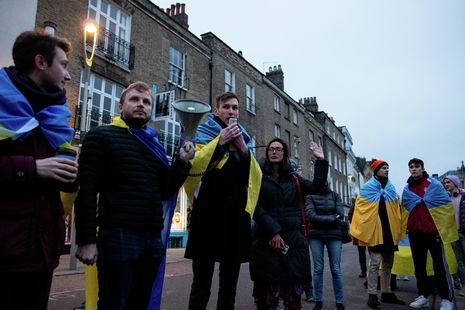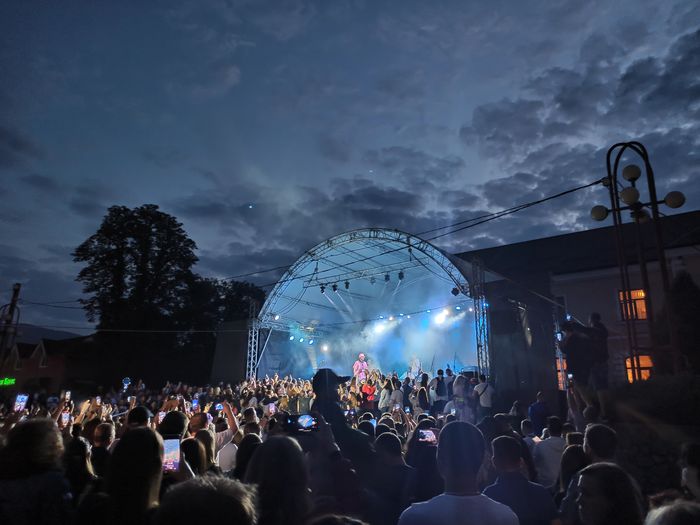The other victims of the Russian invasion: Ukrainian art and cultural heritage
‘More than ever, it is critical to support Ukrainian artists and educate ourselves about their rich cultural history’

It has now been over eight months since Russia first invaded Ukraine. The loss of human life has been devastating, the destruction of homes has left millions displaced, and the demolition of Ukrainian art and heritage poses the threat of permanent cultural erasure. In times of conflict, attempts to assess cultural demolition can be perceived as misplaced and opens up moral debates: yet cultural erasure is nonetheless a serious impact of war.
The Russian occupation of Ukraine also represents an attempt at the obliteration of Ukrainian identity
According to Oleksandr Tkachenko, Ukraine’s culture minister, almost 40 Ukrainian museums have been looted, amounting to millions of euros in damages and the invaluable loss of historical sites and national art. With the outbreak of war, curators, and archivists at almost every cultural institution in Kyiv have taken down displays in an attempt to shelter over 4,000 artworks. This has left the cultural spaces empty of their essence, and perhaps most importantly, an audience. In the context of violence and long-lasting destruction, the continuation of Ukrainian cultural identity through the preservation of national sites and valuable artefacts becomes crucial.
A sense of collective national identity and shared history rests on these national symbols and artefacts, the erasure of which inevitably leads to the potential loss of Ukrainian culture. In times of war, archival looting and attacks on national institutions, such as museums; art galleries; or libraries, are tactics used to achieve a form of cultural domination and can be viewed as a form of ethnic cleansing. Conflict-related destruction of cultural heritage is inextricably linked with national security issues. It leads to the loss of collective memory as well as the delegitimization of cultural identity. Alongside the incomprehensible threat to life, the Russian occupation of Ukraine also represents an attempt at the obliteration of Ukrainian identity. The preservation of artefacts that document and symbolise sentiments of Ukrainian nationality and history becomes an urgent matter. In such a context, the role and work of archivists; curators; artists; and other cultural sector workers becomes indispensable.
Sunbach urges us to envision the war beyond what is captured in mainstream media
Elena Subach is a Ukrainian photographer, born in the coal-mining town of Chervonograd in western Ukraine. Drawing on memories; iconography; and rituals, the artist visualises and reimagines the identity of Ukraine, attempting to define the nation beyond the imagery of the war. The persistent flow of wartime photography and violent imagery of Ukraine risks equating the country with a site of ceaseless violence— and its victims with anonymised statistics. Through her photography, Sunbach urges us to envision the war beyond what is captured in mainstream media. She zooms in on and exposes more intimate, individual experiences— turning her lens to what those who are fleeing the country have left behind, rather than portraying them as nameless victims. Her work has most recently been exhibited at the Dobbin Mews Gallery in New York with her series “In Ukraine”, as well as at the Deichtorhallen Gallery in Hamburg. Her newly released photography book ‘Hidden’ launched on the 15th of October at Biblioteka Kyiv documents the everyday civilian effort to preserve monuments situated around the city of Lviv at the advent of war.
‘Hidden’ pictures volunteers and workers in the medieval city of Lviv rushing to the rescue of statues in the town’s squares and in churches. You can see them wrap the statues in plastic foil and carry them to safe spaces, hiding them underground for security purposes. In one photograph, we see a group of people taking down a sculpture, while another shows a man in a mask sheltering a statue in his arms as he transports it. Through the use of direct flash photography, the images document the act of concealing statues as the war in Ukraine wages on. They have an almost clinical quality, evoking an eerie sense of tension and urgency. The introductory essay by one of the workers, Yurko Prohasko, tasked with taking down a statue of the patron saint and protector of Kyiv, Jan of Dukla, is one of the personal insights that the book provides into life in the city during this time of emergency. By confronting the viewer in this way, this photography book highlights the more personal consequences of war that often get lost in mainstream media.
More than ever, it is critical to support Ukrainian artists and educate ourselves about their rich cultural history, in order to contribute to the process of ensuring Ukrainian cultural preservation.
 News / Eight Cambridge researchers awarded €17m in ERC research grants27 December 2025
News / Eight Cambridge researchers awarded €17m in ERC research grants27 December 2025 News / Clare Hall spent over £500k opposing busway 24 December 2025
News / Clare Hall spent over £500k opposing busway 24 December 2025 Comment / League tables do more harm than good26 December 2025
Comment / League tables do more harm than good26 December 2025 Comment / The ‘class’ of Cambridge24 December 2025
Comment / The ‘class’ of Cambridge24 December 2025 News / Caius mourns its tree-mendous loss23 December 2025
News / Caius mourns its tree-mendous loss23 December 2025









